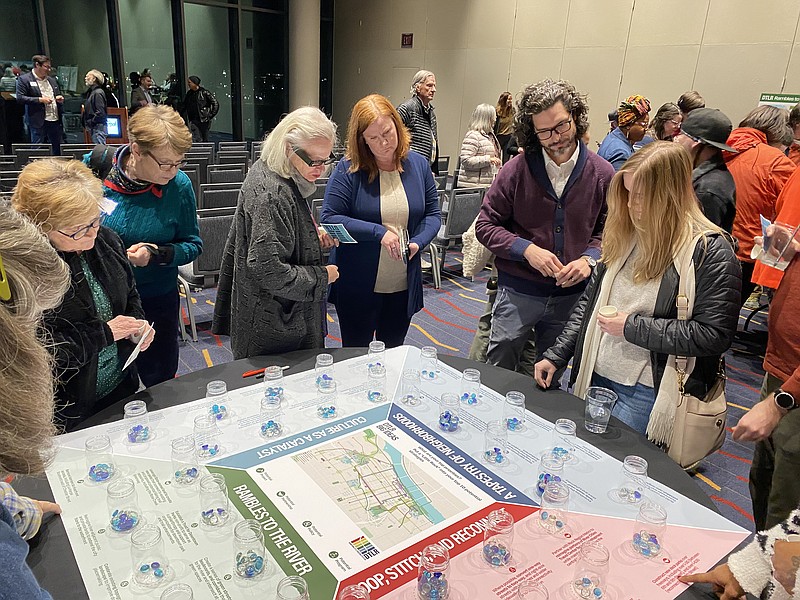Attendees at a "community visioning workshop" in Little Rock on Monday evening were told of themes and strategies under discussion as officials work to develop a downtown master plan for the capital city.
It was the second public meeting since the city-funded planning initiative officially got underway with a kickoff event held on Oct 11.
The master plan team has received close to 600 survey responses and nearly 3,000 visitors to the project website following the kickoff meeting, which was attended by 250 people, Josh Brooks, a principal with the firm Sasaki, told a crowd of more than 100 people at the Robinson Center.
Themes related to open spaces, cultural and historical assets, downtown connectivity and more have emerged as a result of the outreach.
"Downtown Little Rock is an epicenter of urban life available to all of Arkansas -- a front porch for history, culture, activity, and recreation with authentic grit and unmatched quality of life," a draft vision statement shown to attendees on Monday said.
It called downtown "a diverse, inclusive, and vibrant collection of neighborhoods and people that is a great place to live, work, learn, play, and visit."
Brooks and Daniel Church, the project manager for Sasaki, floated several big ideas that might become part of the master plan.
An interconnected network of green spaces and corridors would connect residents to the Arkansas River under the "Rambles to the River" concept, Brooks said.
He suggested pursuing a reorientation toward the river and improved connections between trails.
The team also has started to define the character of each of downtown's neighborhoods as they examine livability and quality of life within them, Brooks said.
Signage and way-finding can help establish a neighborhood's identity and culture, he said.
Policies and investment strategies should help support a "community heart" of each neighborhood amid efforts to unlock the potential of underutilized, low-density spaces and encourage the development of housing, Brooks said.
With transit and connectivity as another fundamental theme, officials have examined transit enhancements, street improvements and the barriers to connectivity with the goal of getting people from where they are to where they need to go, according to Church.
Despite a bus network that converges downtown, the team has heard about people at the University of Arkansas for Medical Sciences campus or the Arkansas Capitol who cannot get downtown easily, he said.
Other downtowns have used bus rapid transit to connect institutions to one other, reducing the need for parking and bringing people together, Church said.
He also suggested extending the downtown trolley line to a southern portion of Main Street to allow people to get to the popular SoMa neighborhood without driving.
New deck parks or improved bridges could help reconnect neighborhoods that have been fragmented by interstate construction, Church said.
Little Rock could be improved as a cultural destination with better connectivity between the historical and cultural institutions -- Church described them as scattered and difficult to get between -- possibly via a "cultural loop," he said.
Additionally, in terms of acknowledging the past, strategies might include creating a new museum of Arkansas indigenous history and the Trail of Tears, re-establishing West Ninth Street as the heart of Black culture and celebrating downtown's LGBTQ culture, a slide shown to attendees said.
Using their phones, attendees were polled about which of the forthcoming plan's values each idea would support. They also were asked to place beads in jars as a way to indicate support for certain strategies.
A second community survey will run until Dec. 31.

